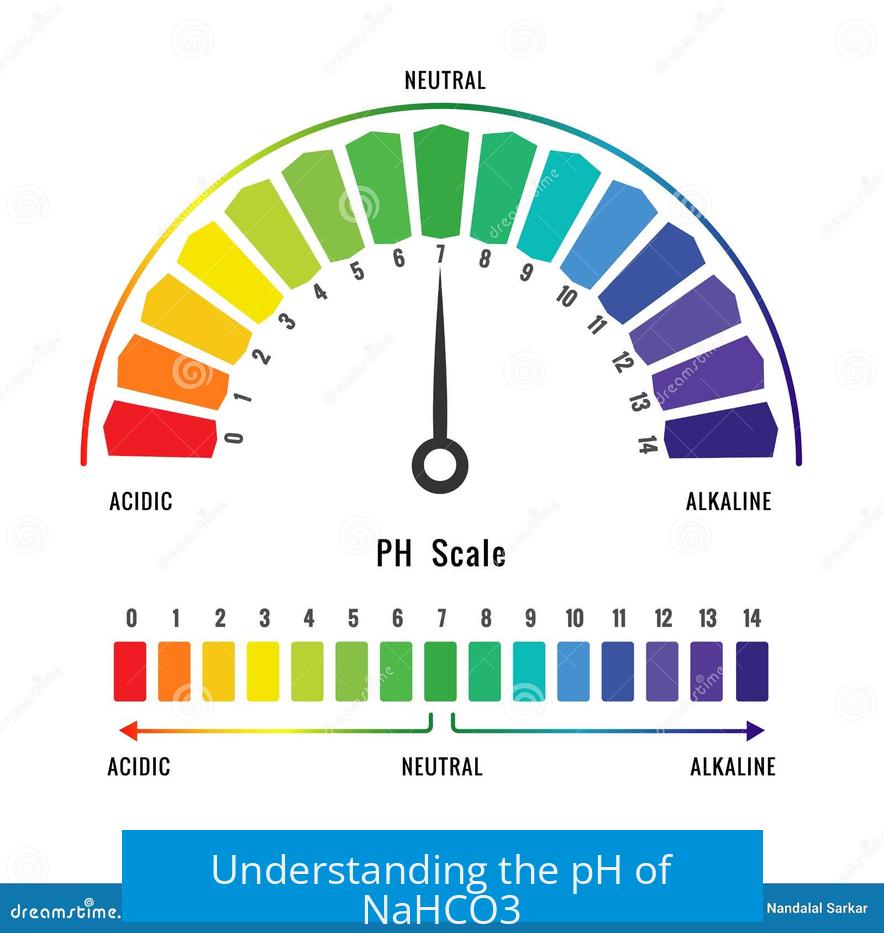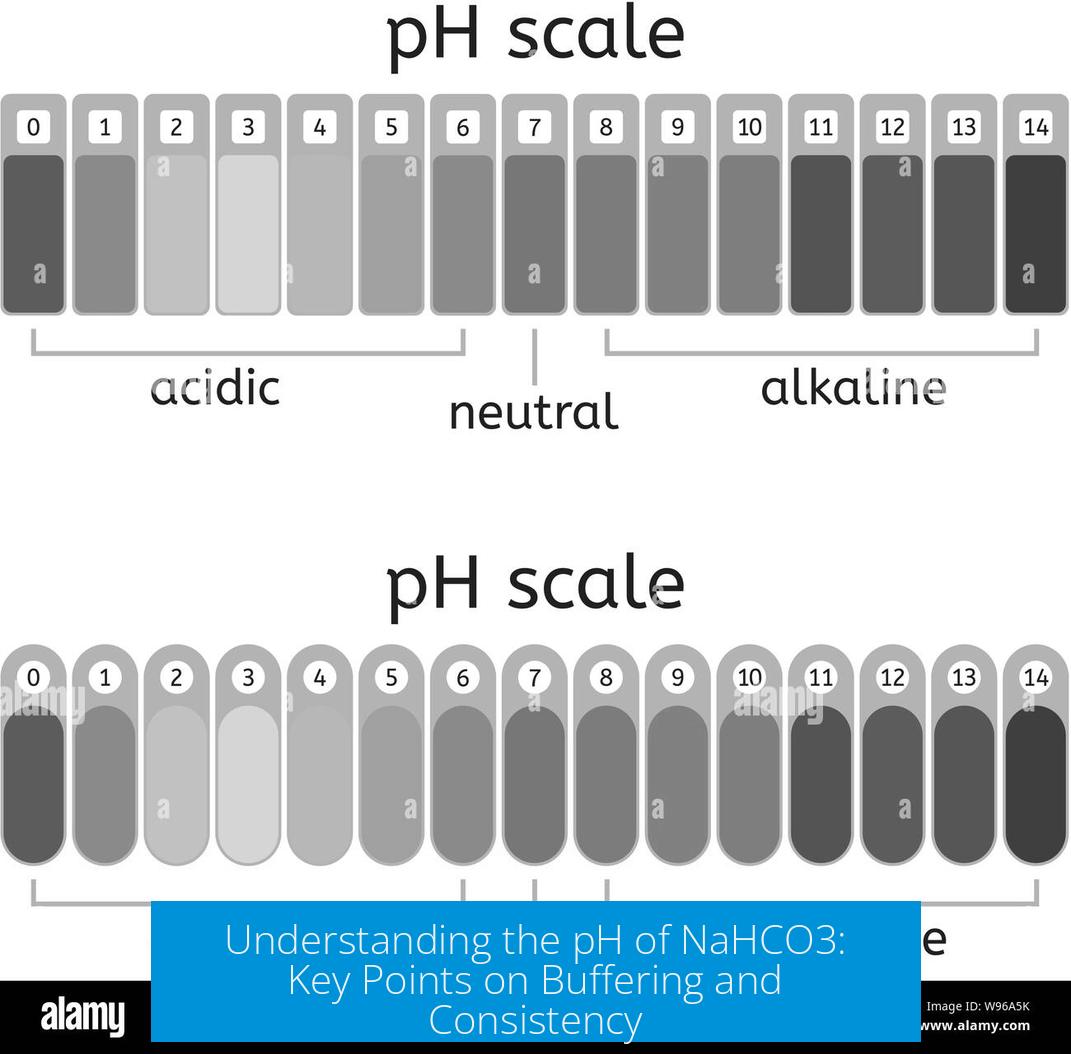Understanding the pH of NaHCO3

The pH of a sodium bicarbonate (NaHCO3) solution is approximately 8.5, making it mildly basic. This value remains fairly constant across a wide range of concentrations. This stability relates to its chemical properties and equilibrium dynamics in aqueous solutions.
Why Is NaHCO3 pH Around 8.5?
Sodium bicarbonate dissociates in water to form bicarbonate ions (HCO3−) and sodium ions (Na+). The bicarbonate ion acts as both an acid and a base through two equilibria:
- HCO3− + H2O ⇌ H2CO3 + OH−
- HCO3− + OH− ⇌ CO32− + H2O
The pH reflects a balance between these species. Using the pKa values of carbonic acid (H2CO3) and bicarbonate allows an approximation of the pH. It equals roughly the average of these pKa values, yielding a pH near 8.5.
Buffering Capacity and Equilibria
Sodium bicarbonate solutions act as buffers. They resist pH changes because both the conjugate acid (carbonic acid) and conjugate base (carbonate ion) coexist. This self-buffering property stabilizes the pH over varied conditions.
Any accurate pH calculation must include multiple equilibria. Ignoring reactions such as bicarbonate reacting with hydroxide to form carbonate distorts results. Comprehensive approaches use equilibrium constants along with mass balance in ICE (Initial, Change, Equilibrium) tables.
Consistency Across Concentrations
One notable feature is that the pH of sodium bicarbonate solutions remains roughly constant irrespective of concentration changes. For example, a 1 M solution has a pH about 8.5, and dilute solutions show similar values. This contrasts with strong acids or bases whose pH varies sharply with concentration.
Summary of Key Points
- The pH of NaHCO3 solution is around 8.5, mildly basic.
- Its pH stability is due to equilibrium among carbonic acid, bicarbonate, and carbonate ions.
- Sodium bicarbonate acts as a self-buffer by maintaining conjugate acid-base forms simultaneously.
- Proper pH calculations require considering multiple equilibrium reactions and mass balance.
- pH remains stable over a range of NaHCO3 concentrations, unlike strong acids or bases.
What is the typical pH of a 1M sodium bicarbonate (NaHCO3) solution?
The pH of a 1 molar sodium bicarbonate solution is about 8.5. This value is commonly accepted and reliable for many uses.
Does the pH of NaHCO3 solution change with concentration?
The pH remains roughly stable across different concentrations. Sodium bicarbonate solutions show little change in pH over a wide range.
How is the pH of sodium bicarbonate estimated using pKa values?
The pH is approximated by averaging two pKa values of related acid-base equilibria. This average gives a pH near 8.5.
Why is sodium bicarbonate considered a self-buffering solution?
Sodium bicarbonate contains both its conjugate acid and base forms simultaneously. This dual presence allows it to resist pH changes effectively.
What must be considered for an accurate pH calculation of NaHCO3?
Multiple equilibria must be accounted for, including bicarbonate, carbonate, and carbonic acid interactions. Ignoring some equilibria leads to wrong pH values.





Leave a Comment